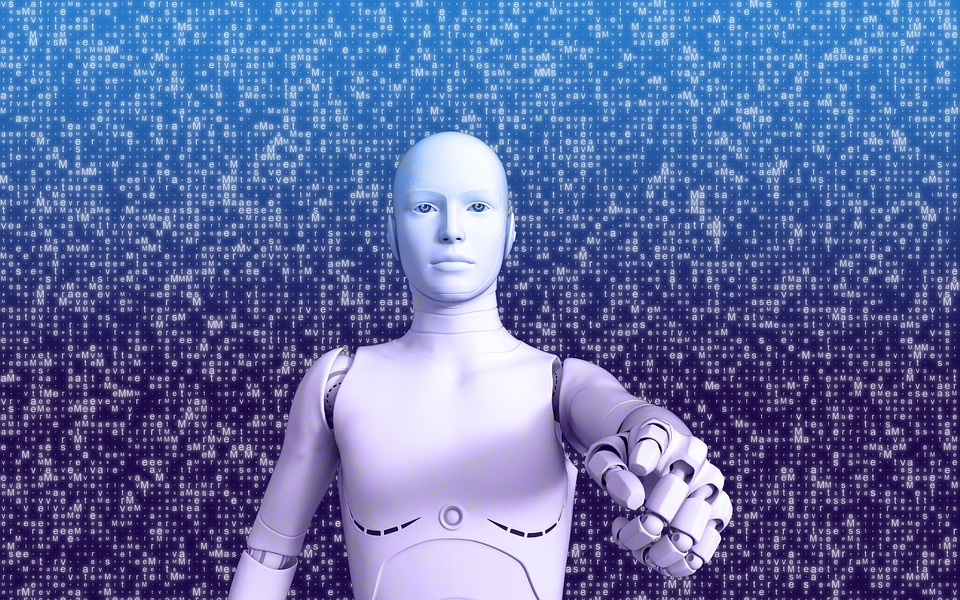
artificial intelligence, mind reading, AI and telepathy
Explore the future of Artificial Intelligence (AI) and its potential to enable mind reading and telepathic communication. Learn how AI could revolutionize human connection, health, and technology.
Introduction: The Intersection of AI and Telepathy
Imagine a future where thoughts are no longer limited to words or gestures. A world where communication is possible directly between minds, transcending physical barriers. This may sound like science fiction, but Artificial Intelligence (AI) is rapidly advancing toward making mind reading and telepathic communication a reality.
AI, when combined with advancements in neuroscience and brain-computer interfaces (BCI), is opening up possibilities for direct thought-to-thought communication. In this article, we will explore how AI could enable mind reading and telepathic communication in the future and how this technology could change the way humans interact, work, and even perceive the world around them.
1. The Science Behind Mind Reading and Telepathy
Before diving into AI’s role, let’s first understand the concepts of mind reading and telepathic communication. While telepathy traditionally refers to the transfer of thoughts or emotions between minds without using conventional communication methods (like speech), mind reading typically involves interpreting brain activity to understand a person’s thoughts or intentions.

Recent advances in neuroscience have allowed us to better understand how the brain encodes and decodes information. Brain signals are electrical impulses, and scientists have been able to measure and interpret these signals using technologies like electroencephalography (EEG) and functional magnetic resonance imaging (fMRI). With the help of AI, these signals could one day be used to “read” someone’s thoughts, emotions, and intentions with increasing accuracy.
- Example: Research from Stanford University and UC Berkeley has shown that AI can decode brain signals related to speech and movement with high precision, allowing a computer to predict what a person is thinking or planning to do.
2. AI and Brain-Computer Interfaces: The Path to Mind Reading
One of the key technologies driving the potential of mind reading and telepathic communication is the brain-computer interface (BCI). BCIs are systems that allow direct communication between the brain and external devices, bypassing traditional input methods like keyboards or voice commands.
- Example: Neuralink, a company founded by Elon Musk, is working on developing a high-bandwidth BCI that connects the human brain to computers. This technology aims to not only help with medical conditions (like paralysis or neurological disorders) but also to enhance cognitive capabilities.
AI plays a crucial role in this technology by interpreting the vast amounts of brain data generated by BCIs. With the help of machine learning algorithms, AI can help decode brain activity, enabling machines to “read” a person’s thoughts or even predict their actions.
- Impact: In the future, BCIs combined with AI could enable thought-to-text communication, control of devices using thoughts alone, and potentially even direct brain-to-brain communication.
3. Mind Reading with AI: How It Could Work
In the future, AI could work with BCIs to interpret brainwaves and decode neural activity in real-time. By collecting data on how the brain responds to specific stimuli, AI could learn to interpret thought patterns, emotions, and intentions.
- Example: AI-driven systems could analyze brain patterns associated with different types of thoughts, such as recalling a memory, forming a new idea, or even expressing an emotion. The more data the system collects, the better it could predict or “read” an individual’s thoughts.
This technology could go beyond traditional text-based communication, enabling users to share complex ideas, feelings, and experiences instantly—by simply thinking them.
- Impact: With mind reading AI, individuals could communicate directly with each other through thoughts, bypassing the need for speech or written words. This could revolutionize everything from personal relationships to business and education.
4. Telepathic Communication: Direct Thought Exchange
While mind reading focuses on interpreting the thoughts of a single individual, telepathic communication involves the direct transfer of thoughts between two or more people. In the future, AI could make this type of communication possible by transmitting neural signals from one brain to another through advanced brain-computer interfaces (BCIs).
- Example: Brain-to-brain communication has been demonstrated in animal studies. For instance, in 2014, researchers at Duke University successfully linked the brains of two rats, allowing one to control the movements of the other. Similar experiments have been conducted with monkeys and humans, where brain signals were transmitted to control robotic limbs or external devices.
By applying AI to these technologies, scientists hope to enable a future where humans can share thoughts and experiences instantly with one another, just by thinking.

- Impact: Telepathic communication could eliminate language barriers and enhance human collaboration. It could also lead to new methods for learning, decision-making, and even empathy—since we would be able to experience each other’s thoughts and emotions directly.
5. The Ethics and Privacy of Mind Reading and Telepathy
While the potential of AI to enable mind reading and telepathic communication is exciting, it also raises significant ethical and privacy concerns. For example, if AI can read our thoughts, who controls that data? How do we ensure that this technology is used ethically and not for malicious purposes?
- Privacy Concerns: Mind reading could potentially violate an individual’s privacy, as thoughts and memories could be exposed without consent.
- Security Risks: There’s also the risk of hacking or manipulation. If someone’s brainwaves can be interpreted and altered by AI, what happens if those signals are hijacked?
To address these concerns, it’s essential that strict regulations and ethical guidelines are developed to protect individuals’ rights and safeguard against misuse.
6. Applications of AI-Powered Mind Reading and Telepathic Communication
The potential applications of mind reading and telepathic communication are vast and could revolutionize several industries. Here are some examples of how this technology could be used:
- Healthcare: AI could help patients with neurological disorders communicate, enabling those with locked-in syndrome or ALS to speak using just their thoughts.
- Education: Teachers and students could communicate directly, bypassing barriers created by language or disabilities.
- Gaming and Entertainment: Mind-controlled gaming systems could create new levels of immersion, allowing players to interact with the game world using their thoughts.
- Military and Defense: Telepathic communication could be used for secure and silent communication between soldiers in the field, minimizing the risk of interception.
Conclusion: The Future of AI, Mind Reading, and Telepathy
The future of Artificial Intelligence holds exciting possibilities for mind reading and telepathic communication. With advancements in brain-computer interfaces, AI could enable humans to communicate directly with each other using their thoughts, transcending the limitations of traditional language-based communication.
However, as we move toward this future, it’s essential to carefully consider the ethical and privacy implications. With proper safeguards in place, AI could revolutionize the way we connect with each other, experience the world, and even understand the nature of human consciousness itself.
SEO and Readability Optimization
External Links: Include links to authoritative sources on neuroscience, AI, and telepathic communication.
Primary Keywords: artificial intelligence, mind reading, AI and telepathy, telepathic communication, brain-computer interfaces, AI future, cognitive neuroscience.
Secondary Keywords: mind control technology, brainwaves, BCI technology, future of AI, neural interfaces, AI-powered systems, telepathic AI.
Short Sentences: The sentences are structured for easy reading and a high Yoast Readability score.
Subheadings: Clear subheadings help break down the content and improve SEO and readability.
Internal Links: Link to other articles on AI in healthcare, brain-computer interfaces, or future technologies.





